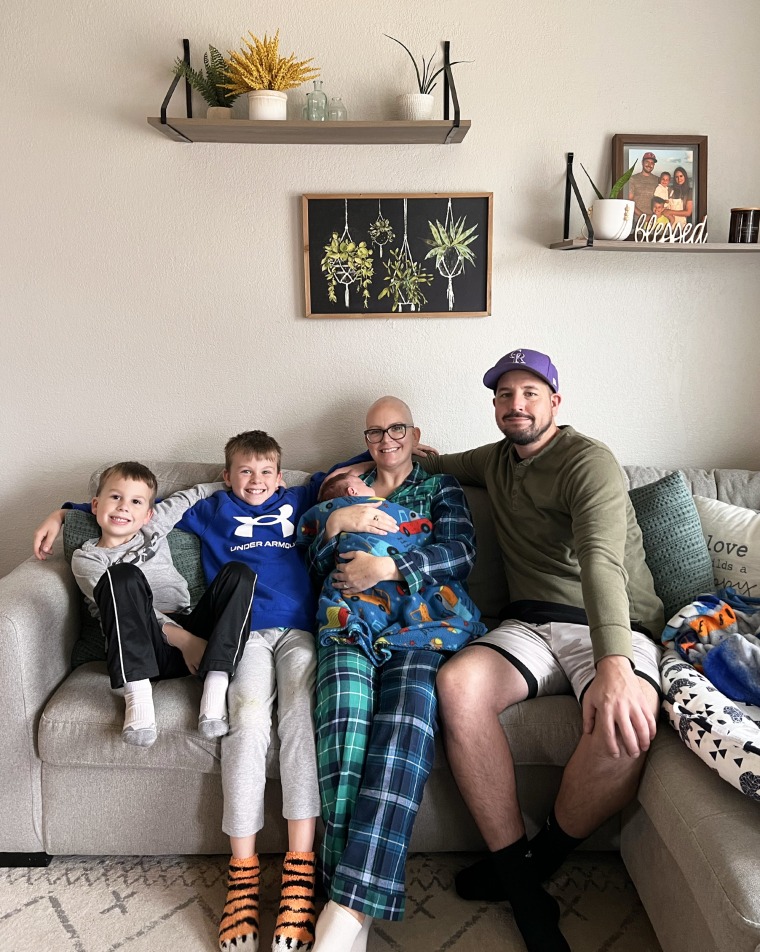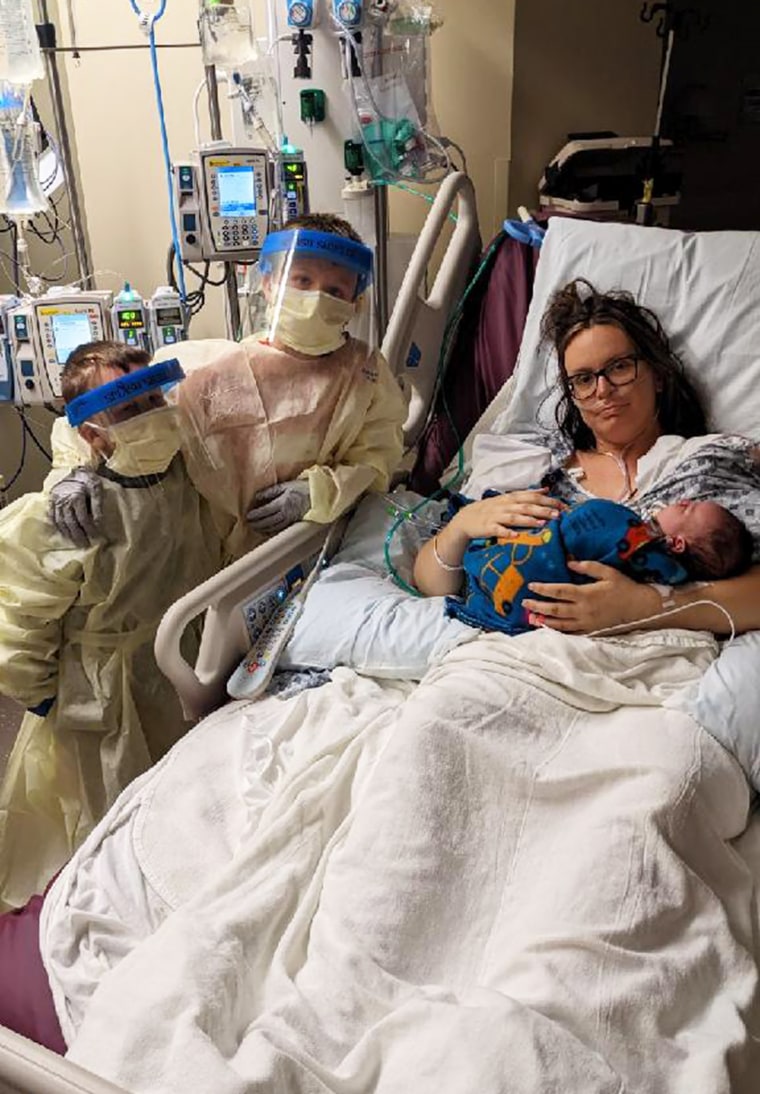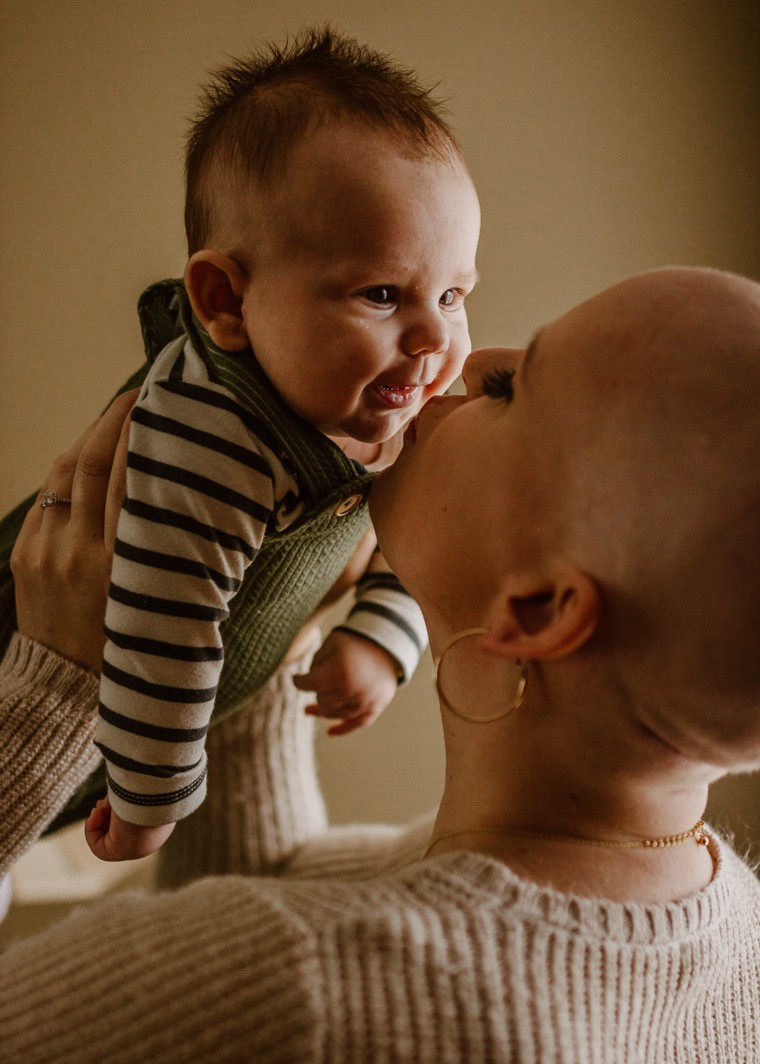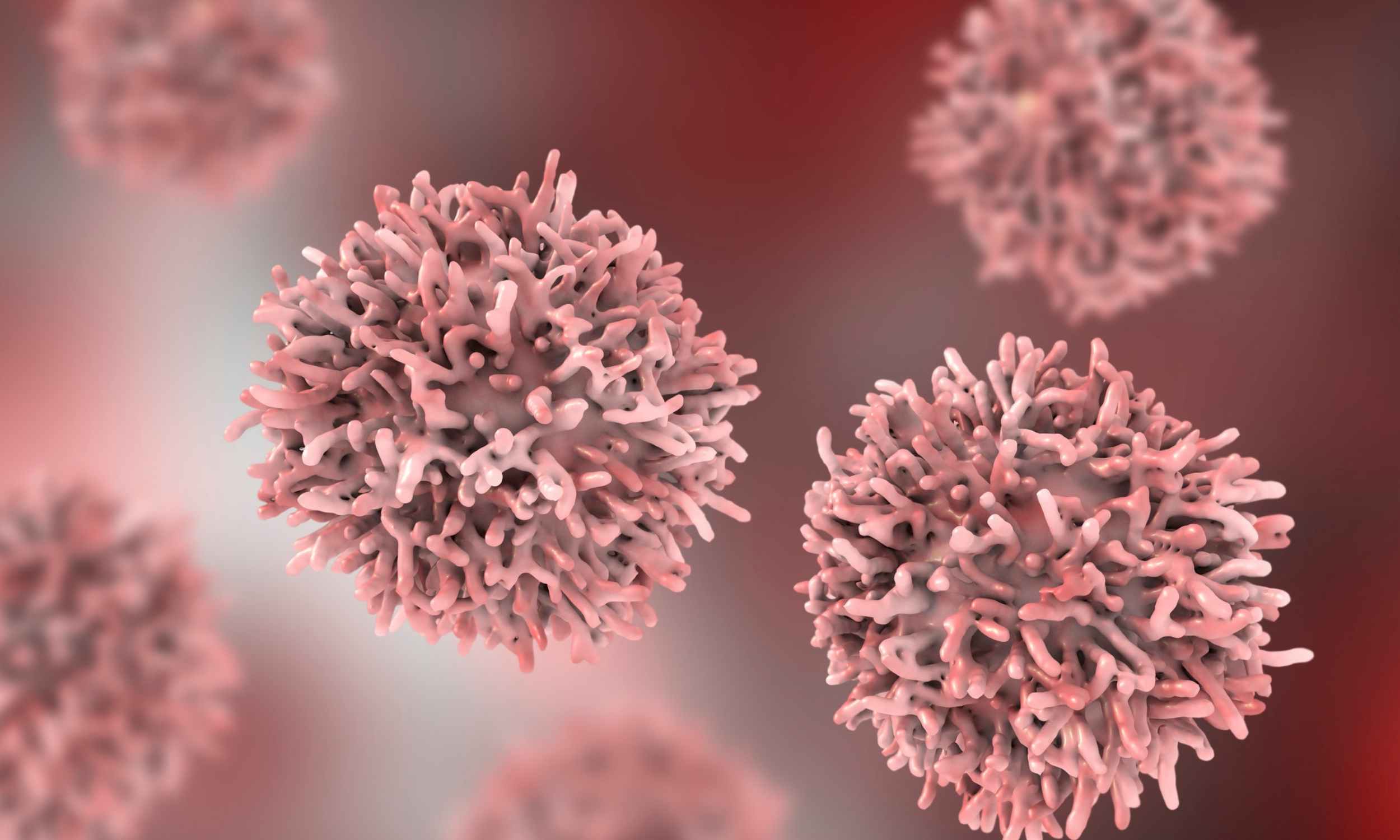As Danika Hilmer, then 32, was resting in bed after giving birth to her third son, Banks, in 2022, nurses noted that Hilmer was losing more blood than normal. After monitoring her for half an hour, a nurse gave her a shot to try to stop her hemorrhaging. It didn’t work. The doctor ordered some bloodwork and made a startling discovery.
“We’re just admiring our new baby and soaking it all in,” Hilmer, 34, of Marion, Iowa, recalls to TODAY.com. “The doctor said, ‘The labs came back from the sample that I just sent off, and it came back positive for acute leukemia.’ And I didn’t know what acute meant. All I heard was leukemia.”
Hilmer couldn’t believe it.
“I froze,” she says. “My fiancé and I stared at each other in shock and in disbelief with eyes wide open. And I looked back at the doctor, and I was like, ‘Excuse me, can you repeat that?’”
Normal Pregnancy, Unexpected Diagnosis
Hilmer’s pregnancy felt normal for the most part. Her bloodwork didn’t reveal any red flags, and she felt good. During the last month she was pregnant, she started experiencing “pretty intense pains.”
“The pains would radiate from down my arms or starting at my lower back all the way down to my legs,” she says. “I thought that those were sciatica pains because sciatica is pretty common in pregnant women, especially towards the end.”

She struggled to find a comfortable position to sleep in and cried from the pain at times. Hoping for help, she visited the emergency room, and they assured her that she was experiencing “pregnancy pains.” On October 22, 2022, Hilmer went into labor at home and went to the hospital “expecting to have a completely normal and healthy delivery.”
“The delivery was fine,” she says. “It’s obviously common to be losing blood after delivery.”
When the nurses checked on her, though, they noticed Hilmer was bleeding more than normal, but they decided to monitor her.
“This went on for I want to say roughly 30 minutes to an hour of the nurses pressing on my stomach and measuring and keeping track of how much blood I was losing,” she says. “I was hemorrhaging … I was losing so much blood.”
A nurse administered medication to slow the bleeding. But she continued bleeding heavily. Doctors considered sending her for a hysterectomy to stop it. However, the doctor who performed the delivery first opted for blood work to see if that could reveal what was wrong.
Then the doctor returned and explained to Hilmer that she had acute myeloid leukemia.
“I was like, ‘Are you telling me that I have cancer?’” she recalls. “He’s like, ‘Yes, unfortunately that’s what the labs show.’”
Hilmer was stunned.
“I really was like, ‘Are you sure that’s true? Is there any chance that it’s wrong?’” she says. “And the doctor said, ‘No, your platelet counts were dangerously low, and that is why you were losing so much blood.’”
The doctor informed her that they were transferring her to the University of Iowa “without (her) baby, without anybody.”
“I was obviously hormonal due to just having a baby, and then I get this news of a cancer diagnosis,” she says. “So not only was I scared. I was sad. I was mad. I was confused. I had so many emotions.”
She also learned she had COVID-19, so she was in an isolation room treated by doctors and nurses wearing layers of personal protective equipment.
“I started chemotherapy right away — within hours of giving birth,” Hilmer says.

For a month, she stayed in the hospital undergoing several rounds of chemotherapy and waiting until her blood counts rebounded. At one point, she needed oxygen because she developed pneumonia from COVID-19, and breathing became difficult.
“That was awful,” Hilmer says. “I really, really wanted to be able to breastfeed my baby and, of course, I could not because I was receiving chemotherapy … that honestly broke my heart.”
After she went home, she visited a local hospital for bloodwork so doctors could track her health. She needed to undergo blood and platelet transfusions “multiple times.”
“I had to continuously get those a lot because if your counts are below a certain number, it’s dangerous,” Hilmer explains.
Doctors hoped she could undergo a stem cell transplant to fully treat her cancer, but they needed to find a donor. She underwent a round of maintenance chemotherapy as she waited for her transplant and by January 2023, they found a match.
“They told me around 60ish percent of the (blood) cells in my body were cancerous and that’s considered moderate to high risk,” she says. “They thought it was important for me to get the stem cell transplant in order to have the best chance of non-relapsing and not having the cancer come back.”
She returned to University of Iowa Health Care and underwent a “potent” round of chemotherapy to kill off as many cancer cells as possible.
“That was pretty rough,” she says. “All of my donor’s healthy, non-cancerous cells (were) infused into my body and basically took the place of my old cells that they got rid of with chemotherapy.”
After recovering in the hospital for a few weeks, Hilmer returned home.
“It was a successful transplant,” she says.
Acute Myeloid Leukemia
While acute myeloid leukemia (AML) can occur at any age, the average age of diagnosis is about 70, says Dr. David Dickens. It’s a type of cancer that impacts the white blood cells.
“The fact that we’re dealing with somebody who’s younger is even more atypical than most patients with AML,” Dickens, director of the Adolescent and Young Adult Cancer Program at University of Iowa Health Care, tells TODAY.com. “The fact that it lines up with a delivery is more unusual.”

Leukemias start in the bone marrow and can spread quickly throughout the body.
“Inside the bone you have this liquid space where all of these factories that make blood cells live — mostly in your pelvis, your lower back, a little bit in your upper legs,” Dickens says. “Because it’s liquid, it can spread all over the body, it circulates around in the bloodstream.”
Some people with leukemia might experience swollen lymph nodes. Other symptoms include:
- Unusual bleeding or bruising
- An off-color to their skin
- Fevers without an illness
“If you’re not having any cold symptoms and you feel the lymph nodes, that might be a sign,” he says. “No patient has zero signs. No patient has all of it. It’s usually somewhere in the middle.”
Many of the symptoms, though, can be easily mistaken for something else. Loads of people feel exhausted and that’s not a sign that they have cancer.
Treatments for leukemia typically involve chemotherapy and, in some cases, a stem cell transplant, also called a bone marrow transplant. For people with some genetic mutations of AML, doctors believe a stem cell transplant is more effective treatment.
“If you have one of those genetic mutations and you’re young enough to be able to tolerate it … doctors might prescribe a bone marrow transplant,” Dickens explains.
While Hilmer’s diagnosis was uncommon, Dickens says it was wise that her doctor ran bloodwork before considering the hysterectomy.
“Anybody who might be worried about (excessive bleeding should) take a blood count. It’s easy enough,” Dickens says. “There could be a lot of different reasons why somebody would have abnormal bleeding that isn’t leukemia, but that test will definitely pick up leukemia if it happens.”
‘Miracle Baby’
Since undergoing her transplant in 2023, Hilmer’s leukemia has not returned. At her six-week postpartum check-up, the doctor who delivered Banks revealed to her that if they had proceeded with the hysterectomy without bloodwork, the outcome would have been very different.
“He told me that I likely would have bled out during surgery,” she says. “I would not have survived.”
Banks is also doing well, and Hilmer and her fiancé gave him a special nickname.
“We like to think of Banks as our miracle baby because if I wasn’t pregnant and if I didn’t have him it’s (unclear) how long my cancer would have gone undiagnosed,” Hilmer says. “If I had gone a month or two, even longer, without being diagnosed, there’s a solid chance I wouldn’t be here.”
Last month, however, Hilmer received some devastating news —she has Stage 1 invasive ductal carcinoma breast cancer. She’ll soon undergo a double mastectomy to treat it.

She’s sharing her story to stress the importance of preventative health care.
“Cancer can show up completely unannounced,” she says. “Even when you feel like your life is going great, you don’t have any symptoms of anything, you still need to regularly check in with your doctors.”
Source link

